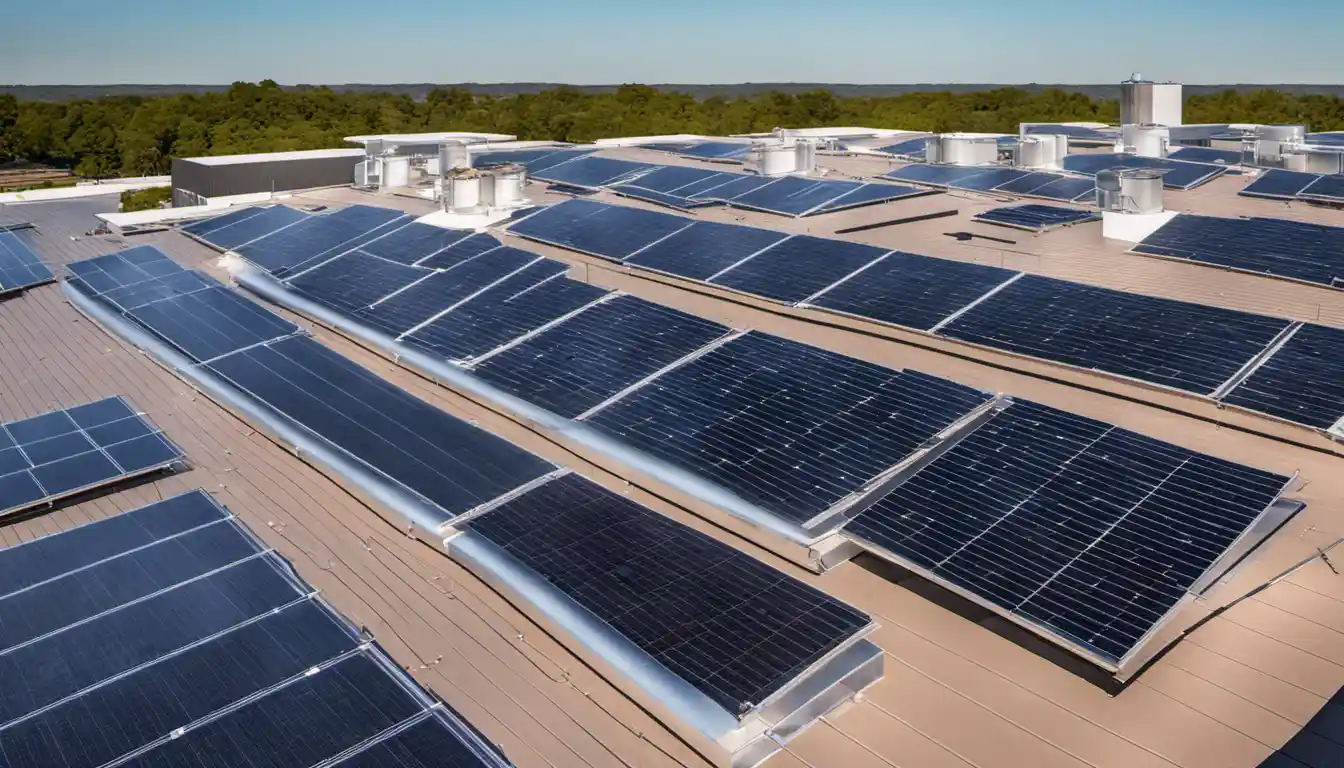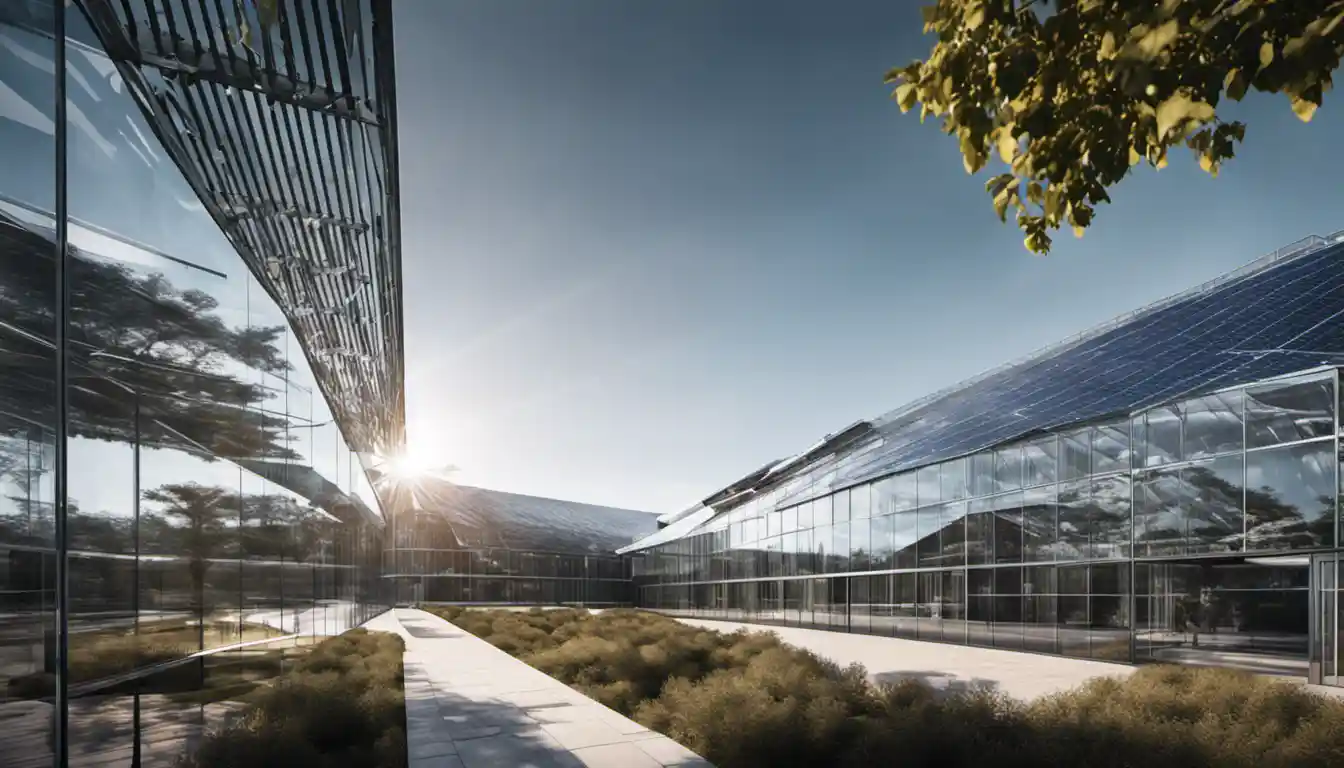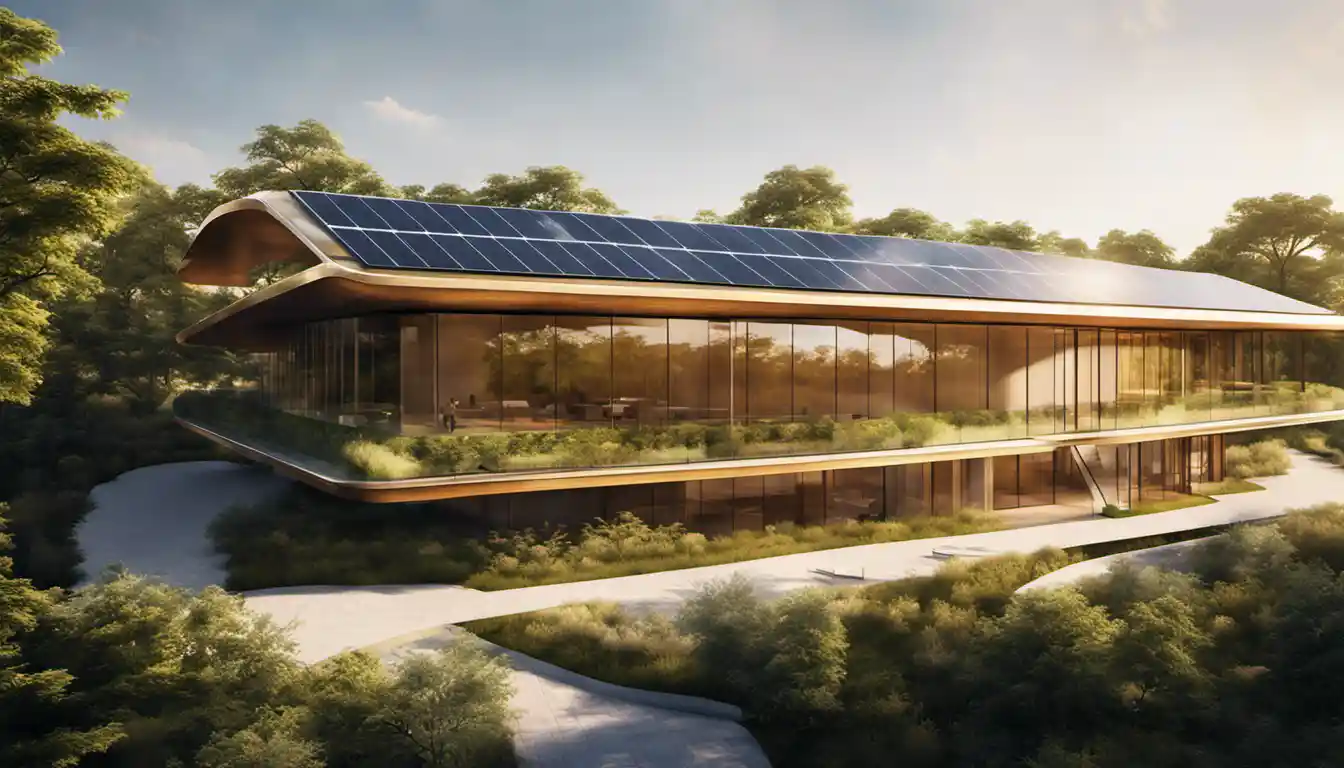Understanding Solar Ventilation
Solar ventilation is a method of using solar energy to enhance the ventilation of a space, typically buildings or homes. This involves solar powered fans or vents that efficiently circulate air and regulate temperature. This environmentally friendly approach reduces reliance on electrical systems for climate control and cuts down on energy consumption.
Definition of Solar Ventilation
Really, what is solar ventilation? In simple terms, it’s using the power of the sun to maintain a comfortable temperature and air quality within your buildings. Unlike conventional electrical systems, it harnesses solar energy through photovoltaic (PV) panels, which convert sunlight into electricity that powers fans or ventilation units. The best part is, even on cloudy days, these systems can still function due to stored solar energy.
Concept and Purpose of Solar Ventilation
Solar ventilation systems have one primary objective in mind – to reduce the load on your conventional HVAC systems. It’s a technique that not only cools your space but also ensures the circulation of fresh air, removing pollutants and dampness. This goes a long way in maintaining a healthy and comfortable environment while reducing electricity costs and carbon footprint.
Delving Deeper into Solar Vents
What is a Solar Vent?
Continuing on the journey of enriching your knowledge about solar ventilation, you may ask, “what is a solar vent?” A solar vent looks much like a regular vent, but with a small solar panel attached. It’s specifically designed to use solar power to promote airflow and reduce heat build-up from your attic or any closed space, a simple yet effective solution for energy-efficient cooling.
How Do Solar Roof Vents Work?
Solar roof vents work based on a simple principle. They harness sunlight, convert it into electricity through the attached solar panel, and this electricity then powers a fan in the vent. This fan pulls hot air from the building’s interior and expels it outside, thereby reducing the indoor temperature. Even when the sun goes down, some solar vents come with a battery that stores energy for continued operation.
Advantages of Solar Vents for Your Home

Solar vents offer several advantages. Besides cooling your homes naturally and reducing the burden on air conditioning systems, they also improve air quality by eliminating molds and dampness caused by trapped hot air. Moreover, they work quietly and need minimal maintenance.
Comparing Solar Vents with Regular Roof Vents
You might be contemplating, “Do solar roof vents work better than their regular counterparts?” The answer is yes! While regular roof vents rely on passive air movement, solar vents actively pull out hot air, efficiently reducing heat build-up. Furthermore, their operation isn’t limited by factors like wind speed or direction, making them more efficient and reliable.
Lifespan of Solar Roof Vents
It’s natural to wonder how long these solar devices will last. The good news is, a solar roof vent is highly durable and could last up to 15-25 years, thanks to its minimal moving parts and tougher construction materials. Optionally, you can dive deeper into the topic by visiting our internal page: Solar Roof Vents – Pros and Cons.
Costs Associated with Solar Vents
While the initial costs of solar vents might be higher than traditional vents, their benefits in terms of energy saving and long-term durability outweigh the investment, yielding savings over the lifespan of the product, making solar ventilation a cost-effective solution.
Practical Application of Solar Ventilation Technology
Application in Domestic Spaces
Solar ventilation can be an invaluable tool in homes, enhancing natural air circulation and temperature regulation. They can be easily installed in attics, basements, garages, greenhouses, and even boats and RVs.
Commercial Applications of Solar Ventilation

Commercially, solar ventilation has vast potential, from small businesses to large industrial buildings. By reducing the reliance on traditional HVAC systems, businesses can significantly cut down on energy expenses, contributing to a greener planet.
Using Solar Power to Cool Your Attic
Solar powered attic ventilators are an excellent solution to address the overheating of attics during summer. They work independently of your home’s electrical system, therefore contributing to a reduction in your energy bill and lessening strain on your cooling systems.
Solar Ventilation Air Preheating
What is Solar Ventilation Air Preheating?
Solar ventilation air preheating is another effective system that uses solar energy to preheat the air before it enters the building. This preheated air requires less energy to reach a comfortable temperature, reducing heating costs during colder months.
How Does it Work?
These systems incorporate a solar collector that absorbs heat from the sun. This heat is then transferred to the incoming fresh air, thereby preheating it before it reaches the ventilation system.
Types and Costs of Preheating Technology
There are several types of solar ventilation air preheating technology, such as flat plate collectors and evacuated tube collectors, each with varying price points. These costs vary, so it’s essential to research the right technology suitable for your application and budget.
Key Factors in Implementing Solar Ventilation

Economic Factors to Consider
While solar ventilation is a sound long-term investment, factors like installation costs, annual savings, payback period, and potential tax credits or incentives should be thoroughly analyzed.
Assessing Resource Availability for Solar Ventilation
It’s important to assess the availability of local solar resources and roof space, as they directly impact the effectiveness of your solar ventilation.
Important Design Considerations
Every building is unique, and thus, designing a solar ventilation system requires careful consideration regarding building orientation, local weather, and insulation capabilities.
Operation and Maintenance of Solar Ventilation Systems
Solar ventilation systems are generally low maintenance; however, periodic checks and cleaning of solar panels and ventilation units ensure optimum performance.
Special Environment Reviews and Permitting Considerations
Certain restrictions or permits may apply, depending on your location. Therefore, it’s important to review local building codes and permits before installation.
Adhering to Relevant Codes and Standards for Solar Ventilation
When installing a solar ventilation system, make sure to follow all relevant local and national codes and standards to ensure safety and reliability.
There you have it, a comprehensive guide to solar ventilation. So next time someone asks, “Do solar roof vents work?” or “What is solar ventilation?” you’ll have all the answers. Enjoy the eco-friendly, cost-effective cooling solutions and contribute to building a sustainable future.



